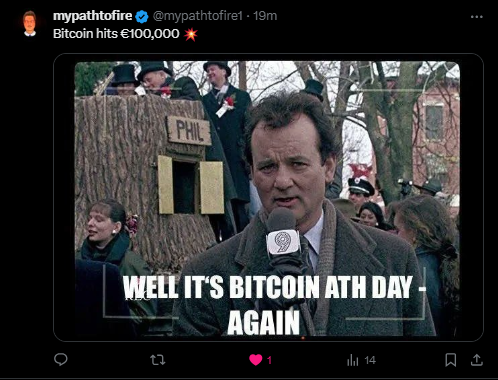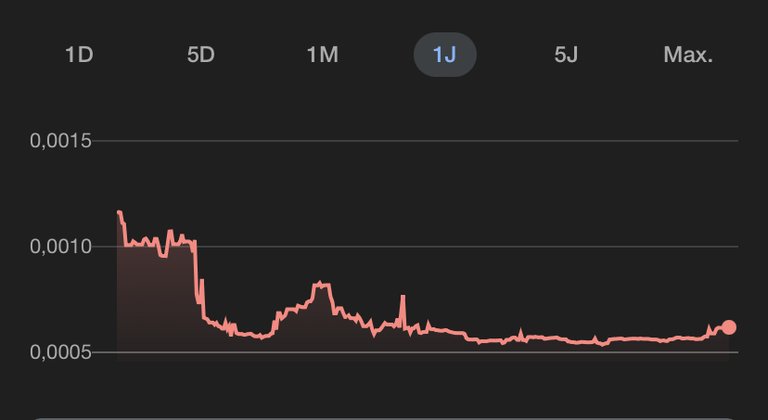Since Keystore is needed to earn $DASH at InLeo, I need to acquire Keystore. LeoDex lets me connect a Keystore wallet to it, but LeoDex doesn't give me a way to acquire a Keystore wallet.
Hive Engine has SWAP.BTC, SWAP.ETH, and SWAP LTC for people who have (respectively) BTC, ETH, and LTC. I thought it would be the same situation with DASH, and maybe 3 months ago it would have been.
3 months ago many people here didn't know about the relationship Dash would form with InLeo; SWAP.DASH would have made more sense then. In any case, it's good for us to have options in how we bring outside money here and to cash out later.
Who's arguing? While it's true that Khal was talking about Dash/InLeo, not everyone was following the news or paying attention; so not everyone knew even if it was out there for them to know.
great experience today spoke about hive and I inleo.
Today I'm gonna show you my experience in this activitygran experiencia hoy en #bqto hablando sobre hive.
🔹 InstantSend: Lightning-fast transactions ⚡
🔹 PrivateSend: Enhanced privacy 🔐
🔹 Masternode network for stability & governance 🌍Are you using any of these #dash features?
my dad wants to put some money in crypto. LOL. my dad is an old school finance man who is ready to risk it for some gains. Hahah. Cracks me up. He holds some bitcoin but wants to play the meme coin game.
I'm so Leo'd that I don't even know how to get in the meme game. I don't even know how to get a solana wallet lol. I think I have metamask from cub though.
He hecho mi primera publicación en mi blog utilizando InLeo, enlace en el primer comentario, sería genial que me comentaran que tal les ha parecido y una q otra crítica constructiva.
I would love to participate in the referral program but i read somewhere that rewards cannot be claimed right now that your team is still working on It
Solana surpassed Ethereum as the top blockchain ecosystem for luring new developers in 2024, according to Electric Capital’s 2024 Developer Report. This is the first time this has happened since 2016.
Very hard to agree without specifics. People don't always know when they are making bad choices. And sometimes the consequences are much more severe than warranted.
The real question is, are you asking if you should have sympathy because you don't have sympathy and you think you should? Or is it because you do have sympathy and you think you shouldn't?
Turmeric, ginger, and cinnamon tea for the night cap. If u didn’t know, black pepper helps the body digest turmeric. Without it you don’t get much of the health benefits of it. The aroma coming from this is 😇
My girlfriend broke up with me because I quote Linkin Park too much. But in the end, it doesn’t even matter. Credit: reddit $LOLZ on behalf of mango-juice
You still had to pay for major upgrades though. With subscriptions you get the upgrades automatically. Then again, maybe you don't want the upgrades if the software already does the job that you bought it for.
Personally, I'm looking forward to more apps that allow one time use with crypto #micropayments.
With @threespeak back up and operational it is time to get back to health, fitness and diet. Today we walk through how to make a traditional #Italian pasta sauce
1/3🧵The human mind is not a muscle, but we can and should work to nurture it, to make it respond to the situations that we are presented with every day in life.
2/3🧵 Sometimes those situations can lead us to extremes and that is why emotional intelligence is important and always believe in ourselves, do not doubt what we are capable of.
Candlelight lights illuminate the path to Christmas. People are preparing for the great date of peace and love, where good feelings flourish and they remind us why we are empathetic human beings.🎄
In more useless Jongo news....
I just discovered that I can't use Binance in Canada because....My government is awesome!
Ah the joys of Canuckistan.
we got rid of one of the clown show this morning....hoping for more this week lol
Slash it! Slash it!
Things will be better as soon as Canada becomes a state.🤣🤣🤣
ha ha ha ha ha ha ah love it. less taxes!!!
Binance was somehow blocked in our country as well.
!BBH
governments know best. they will tell yoU!!
is this new ? Could you use it before ?
i think i remember them taking it away and i never gave it a second thought
Binance was banned 2 years ago here in the Netherlands aswell as they did not want to comply with Dutch regulations. Another awesome government!
Binance banned in your place?
it is
@logen9f likes your content! so I just sent 1 BBH(4/5)@jongolson! to your account on behalf of @logen9f.
(html comment removed: )
)
too bad 😔
You could use a service like simpleswap dot io
Or better yet, Thorchain or Maya Protocol ;)
BTC 100k!!!

2025 is gonna be crazy!
Yeah, the higher BTC surges, the more massive altseason we gonna have! 🤩
Legend Nayib Bukele 🦁🚀
#elsalvador #btc
🎁 High quality Italian gift ideas!
#dash $DASH @dashpay
https://inleo.io/threads/view/italiadash/re-leothreads-2dobpya7b
#gmfrens and happy Monday! 🌅✨ Wishing you a fresh start and a productive week ahead. Let’s make it a great one! 💪🚀 #MondayMotivation #NewWeek #cent
Good morning! Happy Monday
What are your plans for today?
I’ll be hosting an intercompany training on change management.
Morning! My plan is Skierg training session after work 🦁
Good luck with your intercompany traning
Good morning!
Question for everyone:
Will there be a SWAP.DASH token at Hive Engine?
Lots of other tokens have their SWAP.* equivalents there and they aren't getting the activity #DASH is getting
#questions #askleo #hiveengine #tribaldex
Why? Dash doesn't need Hive-Engine.
You would have to talk to the Hive-engine team.
I am a Dash keystore and I just use LeoDex.
some people don't have keystore yet 😀
getting a keystore is as easy as pressing a button ▶️
I'm one of those people.
Since Keystore is needed to earn $DASH at InLeo, I need to acquire Keystore. LeoDex lets me connect a Keystore wallet to it, but LeoDex doesn't give me a way to acquire a Keystore wallet.
You can still use LeoDex to swap for Dash.
I will never use hive-engine
Hive Engine has SWAP.BTC, SWAP.ETH, and SWAP LTC for people who have (respectively) BTC, ETH, and LTC. I thought it would be the same situation with DASH, and maybe 3 months ago it would have been.
Why would 3 months ago make a difference?
Hive-engine is a side-chain with no real development ongoing
3 months ago many people here didn't know about the relationship Dash would form with InLeo; SWAP.DASH would have made more sense then. In any case, it's good for us to have options in how we bring outside money here and to cash out later.
Yeah Hive-engine is not a good option.
Also 3 months ago Khal was talking about Dash/InLeo.
So everyone knew.
So many holes in your comment
Who's arguing? While it's true that Khal was talking about Dash/InLeo, not everyone was following the news or paying attention; so not everyone knew even if it was out there for them to know.
well played
great experience today spoke about hive and I inleo.
Today I'm gonna show you my experience in this activitygran experiencia hoy en #bqto hablando sobre hive.
https://inleo.io/@edgarlopz241/hivers-en-accin-nuestro-taller-de-hoy-te-ense-a-crear-tu-primer-post-en-inleo-act?referral=edgarlopz241
@tipu curate
Upvoted 👌 (Mana: 65/75) Liquid rewards.
Thunk does not have BTC so all this talk doesn't help.
I am focused on getting premium.
grind the dungeons for treasures to afford premium 😀
!BBH
!PIZZA
!INDEED
Huzzah! That is my goal.
If you were like my no-coiner friends who believe BTC is made of nothing you could have as much BTC as you wanted just by thinking about it!
But who would want a whole bunch of nothing, right?
No one! I want a whole bunch of Ale!
@logen9f likes your content! so I just sent 1 BBH(5/5)@thunk.answers! to your account on behalf of @logen9f.
(html comment removed: )
)
Premium is sooo nice!
It's nothing but glad I did itadded an Upvote thanks to @dkid14
Thunk appreciates it
Hola Mi Nombre es Lorenzo está es mi Primera publicación en Hive #bqto
Hola cómo están soy nueva en Hive
#bqto
Welcome to Hive and Inleo
Hoola un gusto conocer esta app soy nuevo en Hive

#bqto
Bienvenido a Inleo! Esperamos verte seguido por acá!
Hello, hello :) Pleased to have you here. Welcome to the blockchain💗
mi nuevo post en Hive!! #bqto
Bienvenido a Inleo! Pásala súper interactuando por acá!
Hi, @tsunsica,
This post has been voted on by @darkcloaks because you are an active member of the Darkcloaks gaming community.
Get started with Darkcloaks today, and follow us on Inleo for the latest updates.
Vibes promo vids, not counting actual entries, generated 62 000 views on Web2 social media. 3x from 20 000 last month when we started.
Happy #lpud lions
We are going to try and power up 100k $LEO Today
So far, we've bought 50k off the market. 50k more to buy for today's power up
How much are you powering up? Comment below and we'll send some of our votes your way 🦁
Pump it
Hi, @bitcoinflood,
This post has been voted on by @darkcloaks because you are an active member of the Darkcloaks gaming community.
Get started with Darkcloaks today, and follow us on Inleo for the latest updates.
Is LEO worth buying?
I did about 2300 Leo
Wow that's amazing!
Yep, have a goal of 100K for next year, I should cross 10K before the year ends.
How different is Leo strategy from owning your own Leo. I have been seeing a lot of threads about this project.
LET'S GO! That's a great goal
You can check our posts for detailed info on that. Mostly, it is about leveraging our stake as collateral to buy more LEO
Think of MSTR for BTC but LSTR for LEO
Oh that's pretty nice. So the stockholders buy LSTR tokens instead of buy straight Leo , but it buys Leo indirectly.
Does that mean the value of LSTR would be different from LEO at a point?
Or people just get more Leo value after a successful leverage (vice versa)
I cleared my account, powered up 398. 664
LFG, Nice!
Happy #lpud !
Whoa, 100k! Lion move! Go go go! 🦁
Mine's way too small to mention, lol!
No Lion is too small. Keep stacking that $LEO
Powering up over a 100 LEO
Nice!
What's an LPUD?
anyone cash out in $DASH yet??
We need to engage them more. The min is $15 bc of Maya minimums for swaps
Havent seen anyone post about it yet , but I know @thelastdash was at least getting close 🦁
just gave them a bunch of upvotes. I hope they get there soon!! !BBH
I am very close, will post about it when I do. Thanks for the upvotes, I really appreciate.
You are one of the new accounts that are fun to engage with. So ofc you get some upvotes 🦁🚀
@dkid14 likes your content! so I just sent 1 BBH(1/5)@anderssinho! to your account on behalf of @dkid14.
(html comment removed: )
)
Not yet, but I am getting close.
Nice. Excited for someone to make it.
i thought it is new accounts that registered with keystore that can cash out rewards via dash ??
Not yet
🔹 InstantSend: Lightning-fast transactions ⚡
🔹 PrivateSend: Enhanced privacy 🔐
🔹 Masternode network for stability & governance 🌍Are you using any of these #dash features?
my dad wants to put some money in crypto. LOL. my dad is an old school finance man who is ready to risk it for some gains. Hahah. Cracks me up. He holds some bitcoin but wants to play the meme coin game.
have him post and earn here
True, and he will find wonderful information here too
I'm so Leo'd that I don't even know how to get in the meme game. I don't even know how to get a solana wallet lol. I think I have metamask from cub though.
what did you say?
I said give me the money and I’ll play around with it. We wil see if he does or not.
Good luck with the meme game lol
Maybe he should start coming to inleo , there are so many info that he will find here which will help his crypto investment journey
A trial is not bad , as long as he gets the right guide , he can earn so much profits on his investment on crypto.. let him try
I think you are good when it comes to investment and you can guide your dad in this case. But still, I recommend you to invest the money wisely.
#cent #freecompliments
Time to feed LeoAI some more!
We need to grow our database.
If you have access to @mightpossibly summarize tool, feel to jump in!
#threadcast #leoai
how do you gain access to the tool?
Just need to sub to @mightpossibly and then you get whitelisted :)
ah thanks a lot!
Its actually a supernice tool 🦁
wow you started quick. Nice
Yes! LeoAI was hungry 👏🦁
Okay I'd help feed it soon.
!summarize
!summarize #finance
!summarize
!summarize #youtube #growth
!summarize #movie #review
!summarize
!summarize
!summarize #sweden
!summarize #cars
!summarize
!summarize #subscribers #youtube
!summarize
!summarize #youtube #growth #views
!summarize #self #made #business
!summarize
!summarize
!summarize
!summarize #youtube #views #growth
!summarize #dividend #income #portfolio
!summarize #logan #paul #reputation
!summarize #instagram #growth #hack
!summarize #youtube #growth #hack
!summarize #casino
!summarize
!summarize #youtube #views
!summarize #diy #car
!summarize
!summarize
!summarize #internet #culture
!summarize
!summarize
!summarize
!summarize
!summarize #animation #youtube
!summarize #war #ukraine
!summarize
!summarize
!summarize
!summarize
!summarize
!summarize
!summarize
!summarize #youtube #growth #subscriber
!summarize #youtube #monetization
!summarize #hormozi #alex #money
!summarize
!summarize
!summarize #lithuania #airport
!summarize
!summarize #stocks #returns #stockmarket
!summarize
!summarize #youtube #growth
!summarize #ukraine #russia #war
!summarize #swedish #vanlife
!summarize
!summarize
!summarize
!summarize
!summarize
!summarize
!summarize
!summarize
!summarize
!summarize
!summarize
!summarize
!summarize #youtube #ai #automation
!summarize #content #creation
!summarize
!summarize
!summarize #crypto #millionaire
!summarize
!summarize
!summarize
!summarize
!summarize
!summarize
!summarize
!summarize #woodworking
!summarize #diy #cabin
!summarize
!summarize #stocks
!summarize #vanlife
!summarize
!summarize
!summarize
!summarize
!summarize
!summarize
!summarize
!summarize
bJMR1att4c?si=bDbGqYny7jDiKevhttps://youtu.be/
!summarize #lonliness
!summarize #youtube #ui
!summarize
!summarize #memecoin #trading
!summarize #x #payout
!summarize #x #elon #musk
!summarize
!summarize
!summarize
!summarize
!summarize #youtube #videos
So I just saw the weekly drip from @bradleyarrow and BBHO....
New game plan, I'm putting all my BBHO into the @jongobbh account!!
Moar $BTC for holding BBHO?
Yes please!!!!
I don't really understand BBHO
It's just a community token....Open topics, free for all stuff lol
Dis is da way man. !BBH
how much do you hold?
like 50k i think give or take
Dang that is a lot.
I have just over a 1K
Hi, @simplegame,
This post has been voted on by @darkcloaks because you are an active member of the Darkcloaks gaming community.
Get started with Darkcloaks today, and follow us on Inleo for the latest updates.
Maaaaan I gotta get a job
Hehe another token for you to hodl 🦁
Didn't know the BBHO project is going well, would love to get in but got very small account so a matter of time 🙏💪
I'll just flip it for $LEO anyways lol
Haha, now see, this is the type of reaction that is supposed to get. ONly if most everyone else paid attention ;)
!BBH !DOOK
@bradleyarrow likes your content! so I just sent 1 BBH(2/100)@jongolson! to your account on behalf of @bradleyarrow.
(html comment removed: )
)
@pepetoken likes your content! so I just sent 1 BBH(1/100)@jongolson! to your account on behalf of @pepetoken.
(html comment removed: )
)
🔍Discover #Dash: the world's first #DAO, built without premine or ICO. A secure, fast and decentralized #crypto
👇Link
https://docs.dash.org/projects/platform/en/latest/docs/intro/what-is-dash.html#intro-index
He hecho mi primera publicación en mi blog utilizando InLeo, enlace en el primer comentario, sería genial que me comentaran que tal les ha parecido y una q otra crítica constructiva.
https://inleo.io/@manuegeek/por-qu-minecraft-sigue-siendo-increble-despus-de-todos-estos-aos-8ke?referral=manuegeek
Go give Thunk some upvotes. Thunk needs premium.
https://inleo.io/threads/view/thunk.answers/re-leothreads-2r9p8jpnk
I'm little with Upvotes but at least it adds up 😁 on my way
I like thunk!
let’s get thunk to premium.
The mighty mage Wizzo has a new scroll that summons elemental weapons.
Can't wait to try it out.
Good Morning.
Local Time- 07:14 AM
GM & Happy Monday!
Good Morning.
Have a great Monday.
Good morning. Have a nice day
We just curated any thread with #lpud in it
Keep posting about your power up on today's LEO POWER Up Day and we'll send votes your way
monitoring the tag
Send it
Nice! Keep using your stake 🦁
We will!
Nice 👍 #lpud incentive!
We're happy to support the community!
i just saw this, didn't know I had to use the hashtag. Better luck next month for me. Nice project by the way
You'll still get a vote here, next month make sure to use the hashtag :)
oh thank you, gonna stake when I claim
Great! Love to see people stacking $LEO. We'll keep curating you
if you are trying to acquire a massive amount of $LEO, putting in sweat equity to earn it through the referral program is the #1 way
https://inleo.io/threads/view/khaleelkazi/re-falcon97-2v9pbhxm5
Thanks for the info. Need to put more effort into it.
I'm just trying to sell domain names now to flip it for $LEO lol
Anything I can do to add to stacks!!
I would love to participate in the referral program but i read somewhere that rewards cannot be claimed right now that your team is still working on It
referrals coming up........
my last company I worked for was taken over by private equity.
Looks like my current might go the same way.
Let’s hope it turns out better for the company.
let’s hope so
i hope it turns out better , how was your weekend ?
private equity be claiming everything these days
Hi, @dkid14,
This post has been voted on by @darkcloaks because you are an active member of the Darkcloaks gaming community.
Get started with Darkcloaks today, and follow us on Inleo for the latest updates.
Stay positive , it will turn out good
Solana surpassed Ethereum as the top blockchain ecosystem for luring new developers in 2024, according to Electric Capital’s 2024 Developer Report. This is the first time this has happened since 2016.
#solana #cent
are we talking meme coin creators cuz I'm thinking there might be a difference in quality of "developer"
Today was a productive day. I stacked over 2k Leo and created around 2k threads in my Threadcast to feed LeoAi.
Time to call it a night.
You did great! Kudos to you. Have a restful night :)
Thanks, I slept well and woke up feel super strong.
That's great! Means you will roar again today :)
Yeah, already roaring.
Bravo!!!! That’s a whole lot
If someone faces consequences for their bad choices, that's on them. Should I have sympathy for them?
Usually depends how much you relate to the person and their circumstances
True and more reason why I asked because I feel it.
Very hard to agree without specifics. People don't always know when they are making bad choices. And sometimes the consequences are much more severe than warranted.
The real question is, are you asking if you should have sympathy because you don't have sympathy and you think you should? Or is it because you do have sympathy and you think you shouldn't?
because I do have sympathy and I think I shouldn't.
I sometimes can warn them over and over yet they still do it.
Ah, yeah, if they are making the same mistake over and over and not listening, it's hard to continue having sympathy.
Thanks for that.
You can have sympathy for their circumstances while still hoping they learn from it and do better in the future.
Turmeric, ginger, and cinnamon tea for the night cap. If u didn’t know, black pepper helps the body digest turmeric. Without it you don’t get much of the health benefits of it. The aroma coming from this is 😇
This concoction has the following benefits:
#wellness #tea #cinnamoncupcoffee
Crypto adoption in the Philippines is up 7% in the last year, while Nigeria and South Africa boast some of the highest ownership rates globally.
The trend is undeniable.
#cryptoadoption #cryptonews
Curious what does it mean!
More real interest in crypto, or just failing government and economy?
Naira collapsed this year
Both. The fall of their fiat pushed them to seek a haven in crypto.
Yeah I was reading the charts a couple of days ago and noticed some of the African countries were hit badly in 2024
Lots of African currencies are losing Value very fast… Sad, Bud the faith of the third world
The adoption will be high come 2025. Crypto is gradually dominating
#gmfrens
Very high. Due to trump and increased noise about crypto.
2 mistakes of my life 🥲
#lpud #inleo
Don't worry... more than 104900 mistake in life!
hahhaa, very true lol XD but we are learning!
At least you finished the year strong :)
yup and now, planning for next year more seriously! !pimp !lolz
lolztoken.com
But in the end, it doesn’t even matter.
Credit: reddit
$LOLZ on behalf of mango-juice
(1/1)
NEW: Join LOLZ's Daily Earn and Burn Contest and win $LOLZ@ifarmgirl, I sent you an
Awesomeness! All the best!
Good news. We can start again next year 😀
OBVIOUSLY! And this time even ,ore serious!
Change the point of view:
Yeah, 10 month in a row 💪🏼🥳👍🏼
lol, I should be more positive 😁
Back when you paid once and owned software outright, instead of endless subscriptions and cloud services.
You still had to pay for major upgrades though. With subscriptions you get the upgrades automatically. Then again, maybe you don't want the upgrades if the software already does the job that you bought it for.
Personally, I'm looking forward to more apps that allow one time use with crypto #micropayments.
Me too
#cent #gifu
This only works when it's done using Jedi Mind Trick.
#dailydook #bbh !BBH
@magnacarta likes your content! so I just sent 1 BBH(1/5)@logen9f! to your account on behalf of @magnacarta.
(html comment removed: )
)
Who's proposing that
With @threespeak back up and operational it is time to get back to health, fitness and diet. Today we walk through how to make a traditional #Italian pasta sauce
Video in comments section below
Good morning Lions!

#cent #bbh
ROAR! Good Morning
Not looking forward to tomorrow when my monday starts. Going to be busy.
Good Morning!
It is my Good Night!
May our paths cross again soon
happy Monday to you too
$BTC Another new ATH today on this lovely #LPUD. That resistance level is looking weaker and weaker. Time for us lions to eat 🦁
We Have Binance..US, because we are awesome-er
Lol..how was your weekend ?
I get what you did here ..us is "us" so binance is for us..lol
We have inleo..io , because we are ??
Lmao
1/3🧵The human mind is not a muscle, but we can and should work to nurture it, to make it respond to the situations that we are presented with every day in life.

#hivereachout #outreach #threadstorm
2/3🧵 Sometimes those situations can lead us to extremes and that is why emotional intelligence is important and always believe in ourselves, do not doubt what we are capable of.

3/3🧵I share in my most recent post for hive my ideas and experiences in this regard, I leave here the link to inleo
https://inleo.io/@actioncats/powerful-mind-hz7?referral=actioncats
Hello lions 🦁
Candlelight lights illuminate the path to Christmas. People are preparing for the great date of peace and love, where good feelings flourish and they remind us why we are empathetic human beings.🎄
#christmas #peace #spanish
We leave you the link of the post
https://inleo.io/@rinconpoetico7/christmas-begins-with-candles-lights-and-a-delicious-coffee-inicio-de-la-navidad-con-velitas-alumbrados-y-un-delicioso-caf-enes-vh?referral=rinconpoetico7
Catwoman and Poison Ivy at MegaCon 2007 in Orlando, Florida.
#cosplay #bbh #cent
I powered up so Leo but I think I missed the LPUD again 😹
Ive done it multiple times…I call it Late PUD lol
Late pud is just a witty replacement for its true meaning lol
exactly!!
I did not have enough for the event.
Maybe next time!
These days, it feels like people lie without hesitation or shame
its the current state of things and it's sad
Unfortunately, lies have become a normal thing.
and when people tell the truth others gets surprised.
Those people have always existed. But they are now more visible because of the internet.
Oh I like the point you've just made.
Let them be, just don't fall to their deception :D
I tried to ask some folks about $BTC and one thing they are saying it is way too expensive. I guess they do not know a thing about buying satoshis.
They might think they must buy a whole 1 BTC in one go.
Hope I still haven't missed Leo power up day.
I staked 195 tokens
You did not :) Congrats on raising your LEO stakes!
Oh Mama was right, have got lucky by my side.
It's just some minutes to end. Happy #lpud fren.
Thank you, I did it..
Just powered up 10,000 $LEO I bought the past few weeks
Happy #LPUD 🦁
Bro just bought my 2024 Goal. Damn I gotta get more money.
keep grinding! Referrals will be the #1 way to stack LEO with low capital investment and big sweat equity investment
Leading by example 😉 Happy LPUD!
I did mine a while ago, 398.664.Happy #lpud Khal.
Very well played my friend, you are a great example and betting big.
Always bet on yourself if you can, it’s the #1 path to success in life
Well said friend, greetings.
I wanted to power up more than 1k but wleo.io did not allow it ;-).
10x what I did on #LPUD
Sunday Stamps ~ “Christmas”
 #sundaystamps #christmas #canada
#sundaystamps #christmas #canada